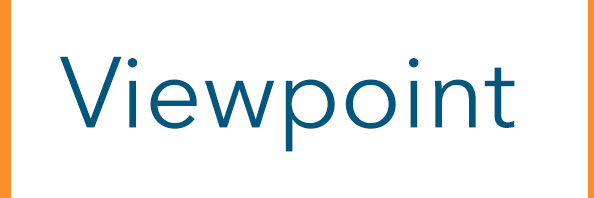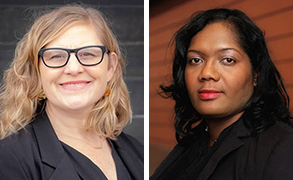A crisis reveals the strength of a leader. The past year has shown us this fact again and again as we have faced a global pandemic, economic devastation, and a racial and social justice uprising.

As leaders at Guttman Community College of the City University of New York (CUNY), we have had to take deliberate steps to lift ourselves up from a near-crushing set of circumstances to continue to serve our students in this traumatic period and to find our collective way forward. As we look toward the change demanded by these times, we have challenged ourselves and our colleagues to view this moment as an opportunity for transformation and innovation.
We cannot say that this has been easy, but it has only been possible because we have learned to lean fully into Linda Hill’s framework for leadership and innovation, which instructs us to trust our collective genius if we want to work toward innovative solutions. Linda Hill is professor of business administration at the Harvard Business School and author of Collective Genius: The Art and Practice of Leading Innovation who has conducted extensive research in some of the most innovative organizations and institutions. Based on her research, Hill states that, “Leadership for innovation comes from a belief in ‘collective genius.’ Respecting our partners’ slices of genius.”
The three Creatives
I think we have all had moments where we feel a collective genius at work. Think of moments in your life or work when you have been a part of a set of trusted co-conspirators tackling something that seemed giant. You all brought different strengths and perspectives to the table and you trusted each other enough to share ideas, but to also challenge each other and push each other in your thinking and ideas. This flow is at the heart of Linda Hill’s framework and is foundational when leading for lasting change.
Hill uncovered three core elements in leaders who believe in the collective genius of their teams: 1) Creative Abrasion 2) Creative Agility, and 3) Creative Resolution. Creative Abrasion occurs when the members of a team engage in constructive arguments as they debate ideas and possible solutions. This step is a critical part of the process where a diversity of perspectives and opinions can be brought forth to interrogate the solutions on the table.
Next is the Creative Agility phase which might move through a number of possible solutions or directions that have emerged from Creative Abrasion and now they can be further pushed, turned over, questioned, adjusted and improved. This process is aligned with design thinking, which is an action-focused reflection and adjustment process. Finally, we get to the Creative Resolution phase where there are a number of well-developed ideas on the table and the group stands back and imagines new ways to combine ideas to create something novel. Hill pushes in this stage to move toward more patient and inclusive decision making which allows for both/and solutions.
Setting the framework
It should be noted that collective genius starts with a strong team that brings individual expertise, diverse perspectives and a commitment to mission to the challenge at hand. Guttman Community College has an incredible team. As a relatively new institution in CUNY, the professionals that join this team are deeply inspired by our service to students, so when we join together to tackle a problem, we show up ready.
Getting consensus on a set of college-wide learning outcomes and the pivot to online teaching during the pandemic are examples of how we employed Hill’s model to create and sustain innovation at the college even during a time of great stress and uncertainty.
Guttman recently finalized a new set of college-wide learning outcomes, Guttman Learning Outcomes, or GLOs. Last fall, we had an obligation to share those outcomes with the community and to pilot the assessment of the GLOs. But, as you can imagine, the energy in the fall for must-do assessment work was understandably terribly low.
We needed to move this work forward, so I turned to my teammates from the Assessment & Learning Committee, a governance committee comprising faculty and staff, as well as a variety of faculty leaders, to find a solution. By engaging in Creative Abrasion, we heard many ideas that pushed us ahead on GLO assessment, but did not capture or acknowledge the current struggles we all faced around moving to the online environment or facing the upcoming election. But a variety of solutions emerged.
We then moved to the Creative Agility phase, sharing the ideas and working and reworking viable and responsive solutions. Finally, we headed into Creative Resolution, where we were able to land a few ideas for increased community-wide engagement that responded to the current moment and still checked the necessary boxes of required assessment activities.
Getting into the work
The results were a faculty-led series on Civic Engagement across the curriculum grounded by our Global Learning and Civic Engagement learning outcome, which was launched weeks before the presidential election. Next, we were able to link to ongoing work around equity and culturally responsive pedagogy (CRP) in the Composition curriculum to invite Dr. Gholdy Muhammad to a campus webinar around deepening our CRP work around the Written, Oral, and Digital Communication outcome.
Both of these initiatives were grounded in one of our new learning outcomes, but also paid careful attention to our collective needs and the urgency to respond to the current moment and weave the idea of social justice into the educational experience.
This work occurred simultaneously as faculty developed two new required First Year Experience (FYE) courses to further address how we could tackle the issues of the moment as a collective while grounding our work and curriculum further in social justice. This process truly engaged Creative Abrasion, Creative Agility and Creative Resolution. Through dozens of meetings with faculty, and the sharing of ideas across the campus, a faculty group charged with changing the content and contact hours of two of the required FYE courses solicited input from students, faculty and staff on the design of the two courses that would have content and contact hours aligned with the current climate and also a course that would better serve students since the initial course students were required to take was conceptualized 10 years ago.
This process encouraged respectful abrasion with faculty coming together to air their concerns, oftentimes in heated debates. We built a space of trust and transparency to ensure that, as a college, we could move into a phase of Creative Agility. In this phase the faculty group extended its ideas to include other ideas on civic engagement and eagerly built on ideas that came forth from other disciplines and stakeholders, including ideas brought forward from our adjunct faculty.
We also found ways for the administrative cost of developing and sustaining these two new courses would be fiscally supported by the college. These new changes moved to Creative Resolution, where the courses cleared governance processes, such as the curriculum, collegewide council and CUNY curricular processes.
New courses for the fall
We begin fall 2021 with a launch of two cutting edge courses: Introduction to Social Justice: Using the promise of life, liberty and the pursuit of happiness to prompt the discussion about rights and equality in U.S. society, this interdisciplinary course provides an introduction to social justice theory and practices. Students examine and conduct research on significant social justice issues in the U.S. today through an integration of quantitative and qualitative approaches. The course focuses on systems of discrimination and oppression, methods and communities of resistance, and transformative visions of democracy and freedom, with emphasis on how current conditions impact students’ lives and local communities. Through project- and inquiry-based learning, students will practice implementing qualitative and quantitative methods to explore course material.
Our second new course is Civic Engagement in a Global Society: This course explores global social movements and multiple approaches toward social change using a comparative approach. Students will conduct interdisciplinary research on U.S. culture and history in a global context. Students will identify and analyze various methods of civic engagement, advocacy and activism, focusing on individuals who act, organizations that mobilize action, and contexts that prompt collective action leading to significant social change on the local and global scale. The course highlights the roles of students themselves as civic actors and agents of change, within their educational setting, the communities to which they belong, and the world at large. Through project- and inquiry-based learning, students will practice implementing quantitative and qualitative research methods into action plans that address injustice and conflict.
Creating space for real change during a period of great upset and uncertainty was not an easy task. Trusting the collective genius is a bit like a stage dive. You wonder each time if the crowd will come together and lift up their hands for a solid catch. But after the first few times when the launch is met with the support of the team, the fear dissipates.
The truth is, the fear goes away completely when you realize it is not you leaping over the edge of the stage. You are really just a band manager on the sidelines. The one who is leaping, every time, is the student. It is our job to work with the crowd to offer them full space to innovate and share their ideas because their solutions will need to catch each student and carry them on to the next moment of joy, the next journey, the next moment of change.
* * *

Niesha Ziehmke is associate dean of academic programs and planning at Guttman Community College in New York City. Nicola Blake is dean of faculty and academic affairs at the college.





